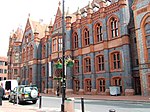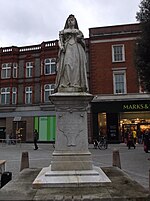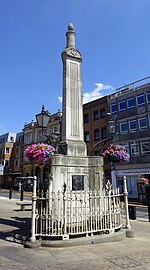Reading Southern railway station

Reading Southern railway station was opened as the western terminus of the South Eastern Railway's route from Redhill, a junction station at the time of opening known as Reigate Junction in south-east Surrey, having direct links thence to Dover port, Brighton (a resort and fellow industrious town) and London Bridge. The station was referred to for exactly one century by an identical name to its neighbour, 'Reading', until 1949. Seven years after its opening the station expanded its uses by becoming the terminus of a new company's Waterloo to Reading line from London Waterloo station. This mid-length line added to the town's connections with more intermediate stops, beyond nearby Wokingham and mid-south parts of Surrey which had been directly served by the station and added a competing service, approximately one third longer in distance to a London terminus than the adjacent Great Western Railway. The station closed for all purposes in 1970 when its demolition began. It was adjacent to, and to the south-east of, the Great Western Railway's Reading General station known since the other station's closure as Reading railway station. Part of the latter's 1989-built concourse is on the site of the west end frontage of the demolished Southern station.
Excerpt from the Wikipedia article Reading Southern railway station (License: CC BY-SA 3.0, Authors, Images).Reading Southern railway station
Forbury Road, Reading Caversham
Geographical coordinates (GPS) Address Website Nearby Places Show on map
Geographical coordinates (GPS)
| Latitude | Longitude |
|---|---|
| N 51.4582 ° | E -0.9701 ° |
Address
Apex Plaza
Forbury Road
RG1 1YE Reading, Caversham
England, United Kingdom
Open on Google Maps










